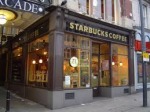A Look at Kent Hunter’s “The Future Is Now: How God Is Moving In The 21st Century Church
 I came across an ebook by Kent R. Hunter of Church Doctor Ministries entitled “The Future Is Now: How God Is Moving In The 21st Century Church.” I would like to quote from this source since it is so good, and then add a few of my analysis to it.
I came across an ebook by Kent R. Hunter of Church Doctor Ministries entitled “The Future Is Now: How God Is Moving In The 21st Century Church.” I would like to quote from this source since it is so good, and then add a few of my analysis to it.
From Chapter 11 – Mission At The Margin, Hunter says: “Unfortunately, many churches in North America theoretically ascribe to the Great Commission (which says “go”), yet follow the Old Covenant of “y’all come.” This was the Old Testament approach: take a pilgrimage to the temple at Jerusalem; that is where you will find God. The Old Covenant described Israel as a light to the nations. The nations were to be drawn to that light like mosquitoes are drawn to your porch light. There they would find the light. There they would visit God — in the temple, on the Temple Mount in Jerusalem. Jesus turned this inside-out. The New Covenant calls for God followers, who now know the Messiah personally, to go, take that Good News about Jesus “to the ends of the earth” (read, “to the ends of your social network”). Many churches of the 21st century, to be effective, will need to let Jesus turn their churches inside-out (read, “turn their people inside out” — in their worldview of doing church, being church).
 Where is the best place to hold a Bible class? Answer: anywhere but at your church. No unchurched person is going to pass you by at the church, recognize you as a friend, and say, “Hey, what are you doing?”, providing an opportunity for you to invite him to join the group. This is not going to happen in the church building. However, it will happen at Starbucks, Denny’s, or in a park. The destination mindset of the modern era will be reversed in this postmodern era. Anything that can be done outside the building should be done away from the church, for missional reasons. This has facility implications of major proportions for any church that is building, relocating, or expanding.”
Where is the best place to hold a Bible class? Answer: anywhere but at your church. No unchurched person is going to pass you by at the church, recognize you as a friend, and say, “Hey, what are you doing?”, providing an opportunity for you to invite him to join the group. This is not going to happen in the church building. However, it will happen at Starbucks, Denny’s, or in a park. The destination mindset of the modern era will be reversed in this postmodern era. Anything that can be done outside the building should be done away from the church, for missional reasons. This has facility implications of major proportions for any church that is building, relocating, or expanding.”
I have always heard the mantra, the building is not the Church, we are the Church, yet the building still exists as our central point of contact for almost all Christian endeavors. The Christian Community meets there; the family of God lives there; Sunday worships service is almost always there; offices of Church business are housed there; we expect “revival” to happen there; we even built coffee shops to attract the addicted American caffeine addicts to come in, and, forgive us, for God and the Holy Spirit to show up there. We do have the Old Testament Temple mentality, forgetting that the veil was rent, and God DOES NOT house himself in a building, nor is boxed in.
 What would happen if we took Hunter’s advice and have church at Starbucks rather than having the caffeine fiends come into our building. But church people would react, “How would we do worship? Can we set up a corner stage and have our worship team play? Can we hand out church bulletins? I guess the pastor could give his sermon in the midst of the worship team’s instruments.” Wrong! Try menus instead of bulletins, fellowship around tables instead of worship blocks, the telling of personal narratives of one’s faith around cups of java instead of a sermon. How about paying the tab instead of passing the offering plate? You know, the unchurched would easily some to eat food or drink coffee while listening to casual conversations rather than sit in pews, listening to music they don’t know and can’t identify with, and being asked to financially support the program.
What would happen if we took Hunter’s advice and have church at Starbucks rather than having the caffeine fiends come into our building. But church people would react, “How would we do worship? Can we set up a corner stage and have our worship team play? Can we hand out church bulletins? I guess the pastor could give his sermon in the midst of the worship team’s instruments.” Wrong! Try menus instead of bulletins, fellowship around tables instead of worship blocks, the telling of personal narratives of one’s faith around cups of java instead of a sermon. How about paying the tab instead of passing the offering plate? You know, the unchurched would easily some to eat food or drink coffee while listening to casual conversations rather than sit in pews, listening to music they don’t know and can’t identify with, and being asked to financially support the program.
 Evangelism is the sharing of one’s spiritual narrative outside church walls to those whose lives are outside the church. Those inside the walls already know the story and often hear it repeatedly every Sunday throughout the year. Pastoral shepherding is walking with people through their daily lives, helping them to face life’s challenges, supporting them through difficult times. In the church it appears as if everyone has it together. Preaching in the church supports “religious semantics” while casual conversations while sharing one’s personal narrative is none offensive, none threatening, and easily understood. I’ve been around the prophetic linguistics in churches, but have seen the power of a believer who is obedient to the Holy Spirit’s voice and direction when told to serve others outside the church walls in everyday life. In church, we are use to the pastor and the worship team on stage, orchestrating the show, program, or as church calls it, Sunday morning service, but outside the church one could casually meet people and direct them to those whose gifting better suits the current need. Even the five fold is more powerful outside the church walls than within.
Evangelism is the sharing of one’s spiritual narrative outside church walls to those whose lives are outside the church. Those inside the walls already know the story and often hear it repeatedly every Sunday throughout the year. Pastoral shepherding is walking with people through their daily lives, helping them to face life’s challenges, supporting them through difficult times. In the church it appears as if everyone has it together. Preaching in the church supports “religious semantics” while casual conversations while sharing one’s personal narrative is none offensive, none threatening, and easily understood. I’ve been around the prophetic linguistics in churches, but have seen the power of a believer who is obedient to the Holy Spirit’s voice and direction when told to serve others outside the church walls in everyday life. In church, we are use to the pastor and the worship team on stage, orchestrating the show, program, or as church calls it, Sunday morning service, but outside the church one could casually meet people and direct them to those whose gifting better suits the current need. Even the five fold is more powerful outside the church walls than within.
I have seen churches based in Malls when Malls where the faux, popular place to be. When the mall aged, called for urban, or Mall-renewal, the gathering of believers, the Church, could relocated where ever the Holy Spirit led. The cloud by day and pillar of fire by night could be followed since those following it were not constrained by the confines of a building structure. I know of a church that started in a night club, is now located in a movie theatre, but is thinking of buying a building to bring stability (and less work in set up and tear down.) A building is more convenient, but in the process they are losing their vision to be out their with the nonchurched.
So the Great Commission “to go” needs to be redefined and reestablished outside the boundaries of church building facilities if the Church, its priesthood of believers, is to be effective in the 21st Century.